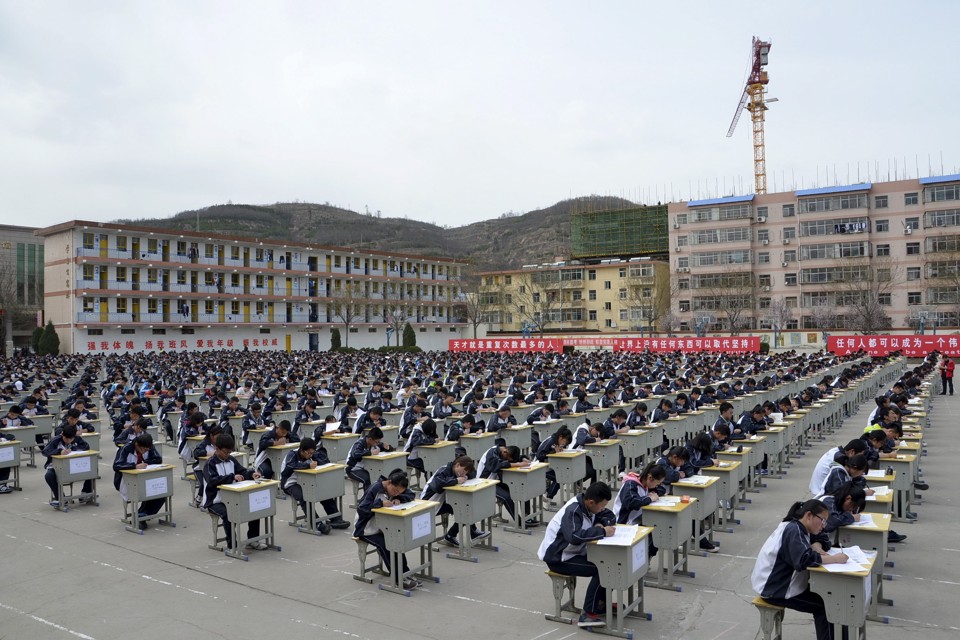A Shifting Education Model in China
An emphasis on success beyond test results takes cues from the U.S. but is only part of the plan to reshape the country’s approach to learning.

No Child Left Behind—for all its blemishes and endless rules—did signal stiffer expectations for America’s schools, setting ambitious standards that they needed to meet in order to dodge sanctions. But the policy pendulum now swings back toward a lenient approach, enabling states to forge their own accountability tools, defining their own learning goals and tests.
New York eased expectations for students last month, as state officials revealed plans to simplify its math test, because pupil scores had fallen too low. Massachusetts, once setting the highest bar for pupil proficiency, has reversed its support for standards. Meanwhile, the Los Angeles school board has proclaimedthat homework should not exceed 30 minutes of effort each night for high-school students.
Already nipping at the nation’s economic heels, schools in the People’s Republic aspire to outshine their American counterparts, ironically pulling from the West’s progressive playbook. Indeed, China’s widening education agenda, while just as demanding as before, draws from a blend of educational ideals, ranging from those of John Dewey to Mao Zedong.
* * *
China’s national exams, known as gaokao, have served as the channel for getting ahead in Chinese society since the 10th century. “Exams may have no use for me,” Haiyan, a 26 year-old graduate student, told me, “but I cannot realize upward mobility” without doing well. She said she rose from a rural village of 200 families by scoring fourth in her county on the national exam and winning a coveted spot in a top Beijing university.The intense expectations for learning woven into the age-old exams—not to mention a longstanding Confucian faith in literacy that still underlines Chinese culture—continue to produce stereotyped whiz-kids in math and graduates with extremely sharp memories, at least according to their performance on international assessments. Shanghai students contend each year with Finnish and Singaporean peers to rank at the top on international OECD education rankings (how China samples pupils remains controversial). But it’s increasingly clear that didactic teaching and regimented exams have, arguably, failed to A Shifting Education Model in China Moves Away From Its Sole Emphasis on Test Scores - The Atlantic:
